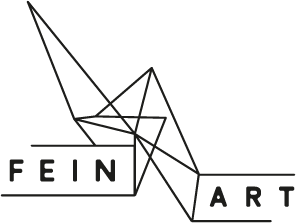As my research unfolds and I continue to explore the conditions that inform the ways art institutions engage with their audiences, I keep thinking about the role of conflict in a dramaturgy of relationships – be that interpersonal, social, or political relationship, conflicts, signals the interdependency of people, places, and contexts. It is a way to acknowledge oneself and the other and to drive the relationship forward towards the mission of ‘living together’. Although a conflict is a clash in values and beliefs, it bears a potential for truce, as long as the dynamic of power is in balance. One of the strategies to maintain this balance is through the barometer of a neutral party, that is a mediator, a term that has been largely employed in the arts. Artistic representation and mediation as a tool seem like a perfect conflict-solving combo, but does it really help?
Mediation is a tool for peacebuilding, which is used for managing and resolving conflicts between parties in political, labour or family disputes. These parties aim to develop mutually acceptable agreements, so mediation can’t be achieved without communicating. A number of synonyms all bearing a prefix ‘inter’, for example intercessor, interpolator, intermediary, interlocutor, to name a few, illustrate the bridging between one ‘other’ and another ‘other’ who voluntarily step into negotiations facilitated by a third neutral party in order to reach compromise.
Mediation in the arts derives from the same idea: there is a conflict, parties want to resolve it, but they can’t sort it out without the help of a third neutral party. But who exactly is in dispute and what is the conflict really about? Who is this mediator and what defines this role as neutral? And can art mediation as an institutional strategy truly contribute to conciliation and peacekeeping?
Mediation in the arts is activated by a paradigmatic shift from looking to listening. The quietness of production, distribution and perception of art centered around the gaze is replaced by the cacophony of voices, languages, stories, and concerns of discursive, performative, and participatory approaches. This might be a museum visitor sharing their impressions about a contemporary art piece or a curatorial collective mapping struggle against all sorts of injustice from around the world, either way the voice serves as a more direct and accessible way to convey your personal thoughts and express your (political) ideas rather than the image. Voice is embodied: it is situated at the borderline between self and other; it bears an opinion, a feeling, a desire, or a trauma.
Voice bears a potential for conflict. A conflict that is recognized and resolved in favor of conviviality – something that art institutions and practitioners, focused on discursive, performative and participatory approaches, tend to aim for. In order to nurture, achieve and celebrate various forms of ‘being together’ throughout all stages of the conflict, they employ mediation as a method and take on the role of mediators. However, it seems that mediation in the arts, instead of being a practice of solving conflicts, is transformed into a practice of avoiding conflicts.
In order to solve a dispute, mediators should be neutral and sensible, while to avoid the conflict, they need to be just nice. Avoiding conflicts is rooted in the fear of upsetting others, which Martha Rosler in her article ‘Why Are People Being So Nice?’ traces back to Victorian-era gentrification, when “amidst the explosion of wealth for the land-owning class, currying favor was the usual behavior of the propertyless in a kingdom where land is the most valuable thing”[1].
This pattern of escaping possible disagreements and being constantly “publicly thrilled, excited and delighted” is inherited by art institutions and art practitioners and signifies not just courtesy but courtliness[2].
‘Happy talk’ becomes a protocol, including in situations when “shit happens,”[3] that is, situations of conflict. According to this protocol, the affirmation ‘Stay Together’ manifested by Arts Collaboratory – “a self-governing structure organized through assemblies and connecting people with different languages, interests, and from diverse cultural backgrounds” – appears next to the only mention of the war in Ukraine that you could possibly find in the whole of ruangrupa’s Documenta fifteen Lumbung. A small banner says: “Ukraine is not the first war nor the only one and talking about it is white privilege”. Yet a few lines later they admit: “We don’t know how to talk about it”[4].
Being nice is one of the main requirements for an art mediator. At Documenta fifteen they were called “sobat”, meaning “friend” in Indonesian – which implied being friends not only with the guests but with the organizers too. But while this friendship, as it seems, existed primarily in the linguistic space of a Documenta website, in reality art mediators were overworked, experiencing high level of stress and unsuccessfully trying to call for care and help.[5]
Martha Rosler identifies this type of interdependency as the “trappings of care” of the experience economy and brings as an example a corporate world practice of feedback: “Every service-oriented exchange, including those with online “bots” and faraway call-center employees, is meant to enfold you in cozy, infantilizing warmth”. Yet “the feeling most people understandably express when asked about their “help desk” experience is inchoate rage”[6], triggered by the heightened faux caring.
While art institutions tend to overcome power imbalance and become safe, friendly, caring, and accessible spaces for their audiences, I wonder – is being nice and avoiding conflicts a right strategy for this?
[1] https://www.e-flux.com/journal/77/76185/why-are-people-being-so-nice/
[2] Ibid.
[3] https://artscollaboratory.org/documentamtam-4
[4] Ibid.
[5] https://sobatsobatorganized.files.wordpress.com/2022/08/open.letter.sobat-sobat.18.08.22.pdf
[6] https://www.e-flux.com/journal/77/76185/why-are-people-being-so-nice/

